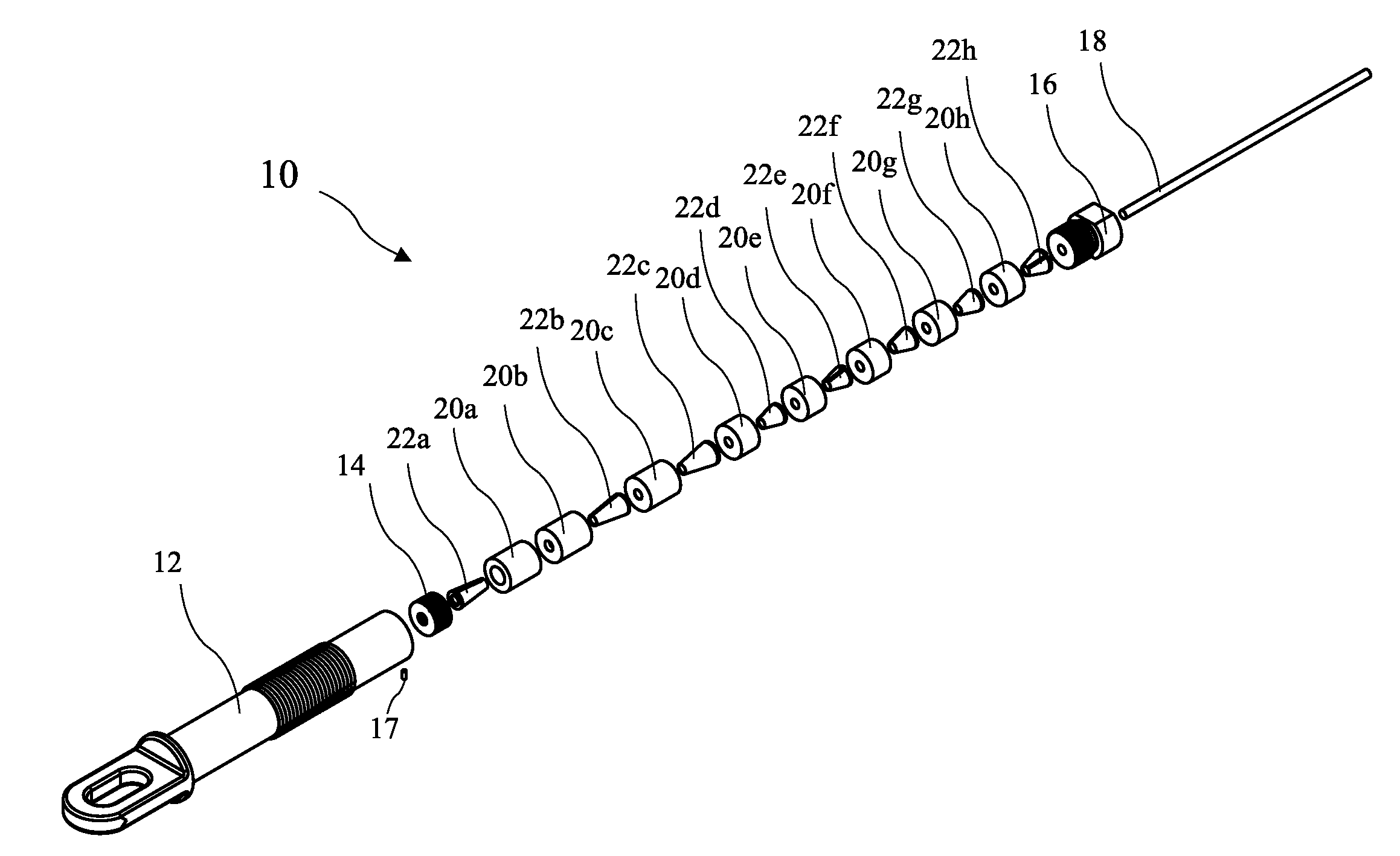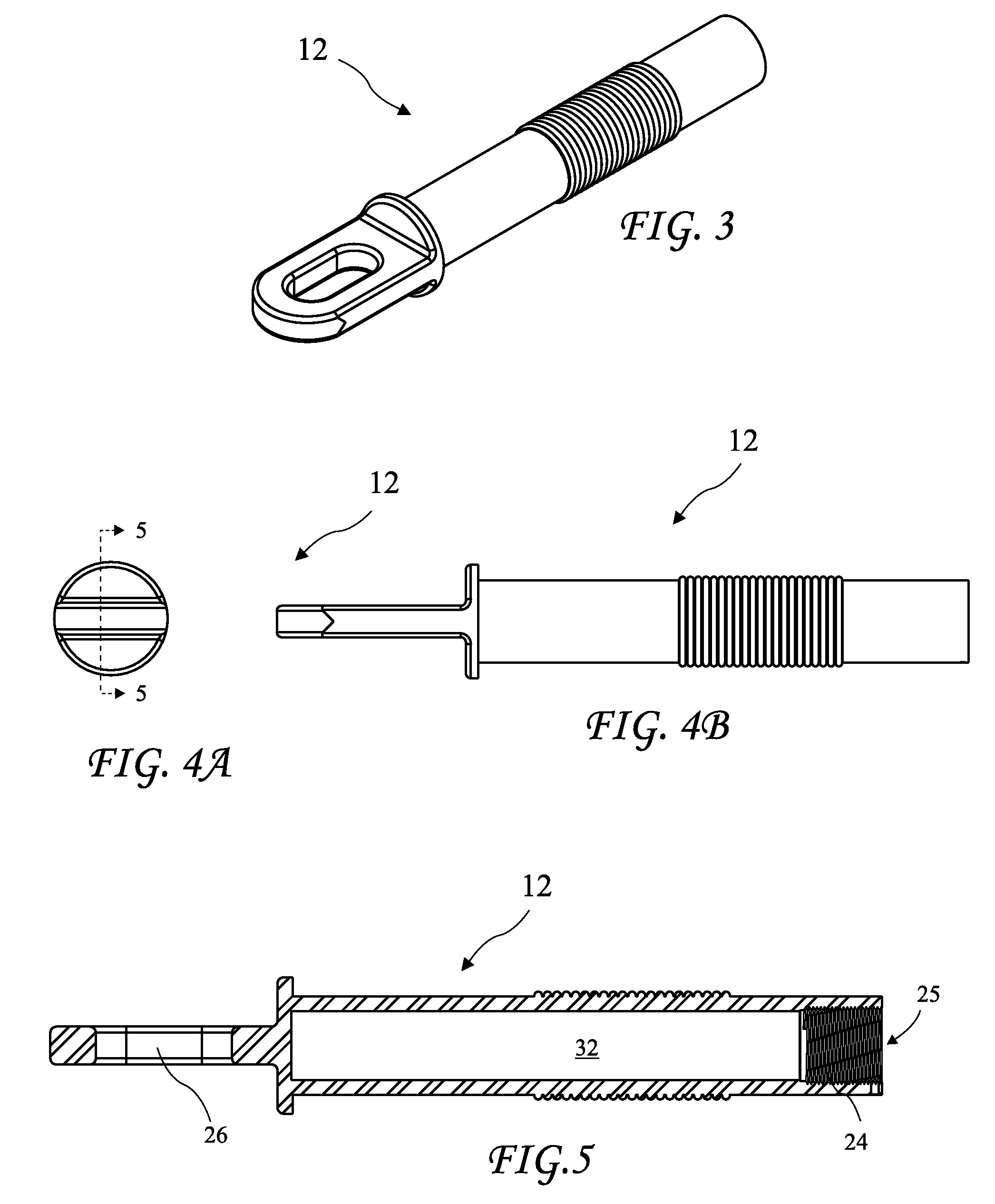Dead cable end
a dead cable and end technology, applied in the direction of cable termination, cable junction, cable connection, etc., can solve the problems of difficult to tighten the dead cable end assembly, damage to the cable, and damage to the light weight core of the dead cable, so as to prevent internal rotation during tightening and reduce or eliminate the damage to the cable
- Summary
- Abstract
- Description
- Claims
- Application Information
AI Technical Summary
Benefits of technology
Problems solved by technology
Method used
Image
Examples
Embodiment Construction
[0049]The following description is of the best mode presently contemplated for carrying out the invention. This description is not to be taken in a limiting sense, but is made merely for the purpose of describing one or more preferred embodiments of the invention. The scope of the invention should be determined with reference to the claims.
[0050]An exploded view of a dead cable end assembly 10 according to the present invention for securing a cable 18 is shown in FIG. 1. An end view of the dead cable end assembly 10 is shown in FIG. 2, a cross-sectional view of the dead cable end assembly 10 taken along line 2A-2A of FIG. 2 is shown in FIG. 2A, and a detailed view of a general collet 22 and collet receptacle 20 is shown in FIG. 2B. The dead cable end assembly 10 secures the cable 18 through a multiplicity of collets 22a-22h cooperating with a multiplicity of collet receptacles 20a-20h. The collets 22a-22h and the collet receptacles 20a-20h are contained in a dead cable end assembly ...
PUM
 Login to View More
Login to View More Abstract
Description
Claims
Application Information
 Login to View More
Login to View More - R&D
- Intellectual Property
- Life Sciences
- Materials
- Tech Scout
- Unparalleled Data Quality
- Higher Quality Content
- 60% Fewer Hallucinations
Browse by: Latest US Patents, China's latest patents, Technical Efficacy Thesaurus, Application Domain, Technology Topic, Popular Technical Reports.
© 2025 PatSnap. All rights reserved.Legal|Privacy policy|Modern Slavery Act Transparency Statement|Sitemap|About US| Contact US: help@patsnap.com



